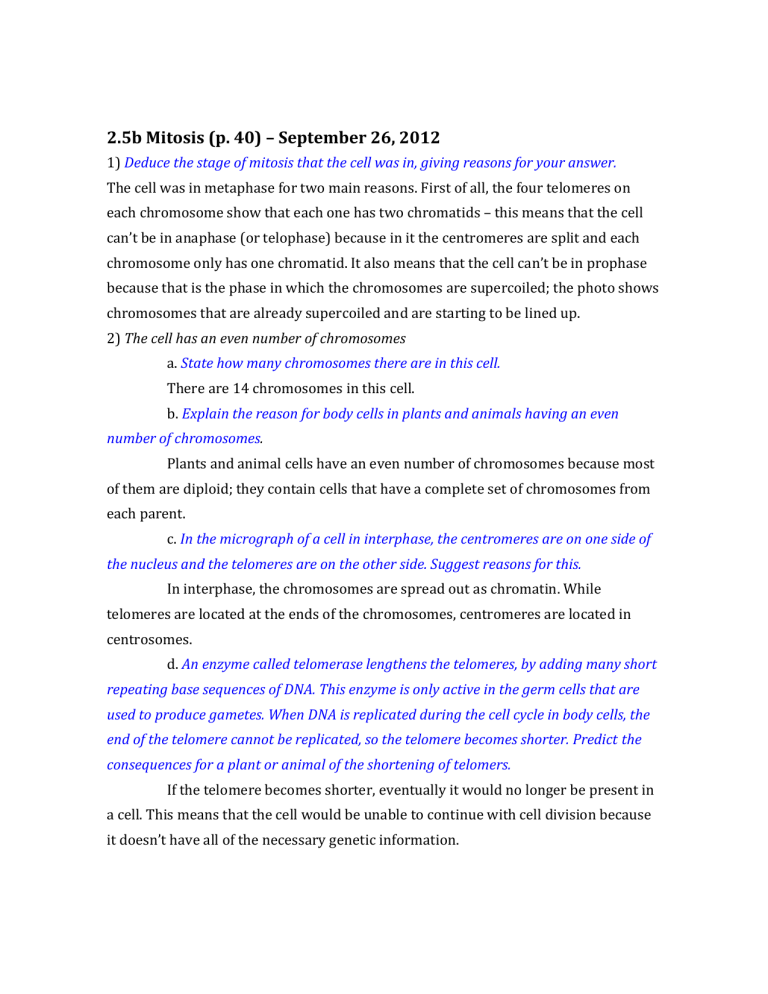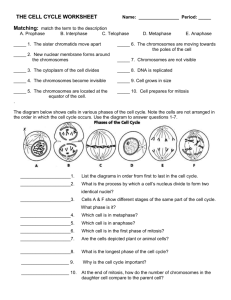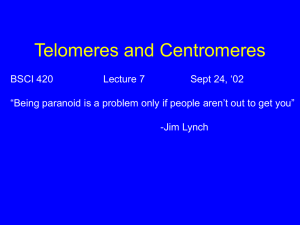here

2.5b Mitosis (p. 40) – September 26, 2012
1) Deduce the stage of mitosis that the cell was in, giving reasons for your answer.
The cell was in metaphase for two main reasons. First of all, the four telomeres on each chromosome show that each one has two chromatids – this means that the cell can’t be in anaphase (or telophase) because in it the centromeres are split and each chromosome only has one chromatid. It also means that the cell can’t be in prophase because that is the phase in which the chromosomes are supercoiled; the photo shows chromosomes that are already supercoiled and are starting to be lined up.
2) The cell has an even number of chromosomes a. State how many chromosomes there are in this cell.
There are 14 chromosomes in this cell. b. Explain the reason for body cells in plants and animals having an even number of chromosomes .
Plants and animal cells have an even number of chromosomes because most of them are diploid; they contain cells that have a complete set of chromosomes from each parent. c. In the micrograph of a cell in interphase, the centromeres are on one side of
the nucleus and the telomeres are on the other side. Suggest reasons for this.
In interphase, the chromosomes are spread out as chromatin. While telomeres are located at the ends of the chromosomes, centromeres are located in centrosomes. d. An enzyme called telomerase lengthens the telomeres, by adding many short repeating base sequences of DNA. This enzyme is only active in the germ cells that are used to produce gametes. When DNA is replicated during the cell cycle in body cells, the end of the telomere cannot be replicated, so the telomere becomes shorter. Predict the consequences for a plant or animal of the shortening of telomers.
If the telomere becomes shorter, eventually it would no longer be present in a cell. This means that the cell would be unable to continue with cell division because it doesn’t have all of the necessary genetic information.








